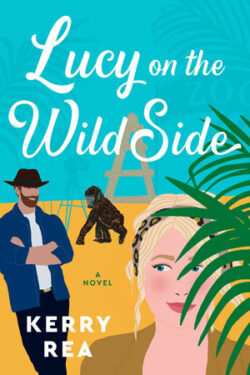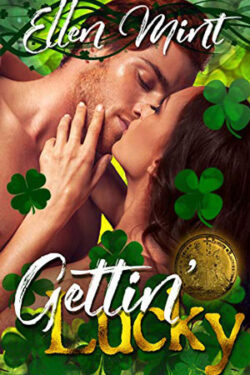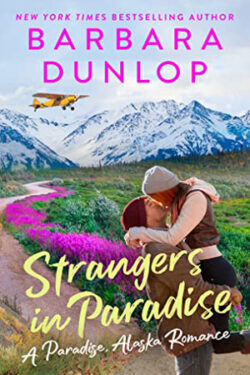World Building for the Fantasy Romance by Meagan Hatfield
Narnia. Middle Earth. Atlantis. Camelot.
When you hear the names of these fantasy worlds, your mind swirls with images of the inhabitants, environments and most of all, how they all fit perfectly within the story. That is successful world building. When done well, it can place your fantasy novel on the keeper shelves of readers everywhere.
Fantasy is described by Merriam-Webster’s dictionary as: “imaginative fiction featuring especially strange settings and grotesque characters.” I have to whole-heartedly disagree. To me, fantasy is more aptly described as a place where anything is possible. Unlike other genres, like say science fiction, fantasy does not have set boundaries or rules. You don’t have to abide by the laws of science, physics or spend hours pouring over astronomy charts. You can pretty much write anything your mind conjures.
There could be a magic spell keeping your hero and heroine apart, like in the movie LADYHAWKE. A small, peace-loving farmer set out on a life-threatening quest to destroy an evil ring, as in LORD OF THE RINGS. Or perhaps even a little boy who discovers he’s a wizard and is whisked away to a special school to hone his craft. (I don’t think I have to name that book.) Each of these fantasy examples took us to wonderfully exciting new worlds and immersed us in their respective stories. All three are different, but exceptional examples of how to successfully build a world while keeping it specific and unique to the storyline and/or characters you’re working with.Nothing to it, right? Well, it’s certainly do-able.
The first thing you want to consider is what kind of fantasy romance you are writing. There are four common sub genres found in fantasy romance novels, Epic being the broadest of them all. With an Epic fantasy, the world you’ve created will be at stake in a good vs. evil type situation. Both the Heroic and Sword & Sorcery sub-genres evolve from this. In the Heroic tale, the hero sets out to save the world, thus the story becomes more about him/her than the actual act of the world being saved. (Think Frodo in the Lord of the Rings – although, I know it is really Sam’s story.) *grins* Sword & Sorcery stories are usually set in some ancient setting, and concentrate on wizardry, swordplay, dragons, etc. (Think King Arthur, Xena, Harry Potter.) Last, the Historical fantasy will take an actual event, place or person, but add magical or supernatural elements. (Think Ladyhawke, Beauty and the Beast) Though some may argue there are more fantasy categories than I listed here, in romance we have a paranormal genre, which covers things such as werewolves, ghosts, witches, vampires and so on.
Okay, so you’ve chosen the specific sub-genre for your fantasy. Now it’s time to create your world. The thing to remember with world building is to keep it simple. This is where it can get sticky. You don’t want to go overboard and make every element of your novel strange and overly detailed. This will only jar the reader, making it harder for them to suspend disbelief and continue reading. Instead, the goal should be to ensure the world you’ve created feels believable and comfortable. It’s kind of like wearing three-inch heels for the first time. Sure it’s different, uncomfortable and hard to maneuver around the room at first. But after a few steps you realize it’s exciting, you like being taller and your legs look amazing.
One way to do this in your story is to keep certain thoughts, ideas or character behaviors within it familiar. For example, if you have a centaur warrior as your hero, give him an obsession for watching old movies, or chocolate chip cookies. It will humanize him in the readers mind, making him more relatable. Harry Potter may be learning how to fly a broom or fight a fire-breathing dragon, but he’s doing these magical, crazy things in a school. A normal, familiar setting we can all relate to. Ideally, you want even your most bizarre creatures to have some human characteristics otherwise you risk disinterest from the readers. Perhaps there are demons from the underworld in your story. Try having them addicted to things like chocolate, sex or air conditioning. Personally, I thought the aliens in ROSWELL were interesting because they put Tabasco sauce on everything. *smiles* Now, the pitfall with this modus operandi is making the world you build too similar to our own. To avoid this, think if it like cooking. You don’t want to have so much seasoning in the dish that you can’t recognize the main ingredient. The same goes for world building. The idea is to pepper the book and/or your characters with common ideas, objects, behaviors, etc. Flavor is the objective and balance is key.
Another important aspect to remember when creating your world is that once you set rules, stick to them. Consistency is the key here. If your hero is a merman and the heroine a human, you have to find a logical and plausible way for them to be intimate. Maybe on certain moon cycles he can change form. Or maybe they have to be submerged. If you made them both horses, wolves or cats, pass some of that animal’s trait onto their human characteristics and don’t forget about it. You don’t want to mention it once and then “bam” they are normal humans for the rest of the book. If your heroine is a witch who grows weak whenever she uses her magic, you cannot have her fight the villain in the end without showing her get tired, or passing out—unless you show a reason why. As always, you don’t want to “cheat” the rules and have things “just happen”. Readers are smart. You should know, you’re one of them! If you cheat them, they’ll put the book down. (Or throw it across the room.)
Names are the last point I’ll touch on. As with any book, use ones that fit the story time, place, feel and characters. Do not just pick some exotic, hard to pronounce name because it’s different. I recommend saying the name aloud. If it trips you up, change it. Also, pay careful attention to the masculine and feminine. You don’t want the readers guessing a being’s gender any more than you want them stumbling over their name. And unless you are writing a time-travel fantasy, be careful not to name one character Xielnain, (which I’d think twice about using anyway) and another character Steve.
However you, the writer, decide to create and build your fantasy world, remember to make splash it with a touch of familiar flavors. Although it sounds backwards, keeping aspects of your fantasy everyday and ordinary, will help make it extraordinary and hopefully place you on that ideal prize – the keeper shelf.
Meagan 🙂







I am not good at writing, but I like this post on fantasy.
LOL! Kim, I would be lost without spell check. 🙂
Hi Robin!
I know I’m a day late and a dollar short, but I wanted to say thanks for stopping by! I’m glad you enjoyed the post…and yes, I loved those Roswell aliens. 🙂
I hope you have a happy holiday as well!!
consistent.. Sorry and spelling proper would be nice too. LOL
Hey Meagan.. Great post. The tips are great about keeping this consisitant.
Thanks for the great ideas about world building. You gave some terrific advise to those of us interested in writing, whether for our own pleasure or to share with the public.
It’s also nice to see that someone else appreciated the ROSWELL aliens and their Tobasco sauce! I always thought that was an inspired touch.
Have a wonderful holiday season!!